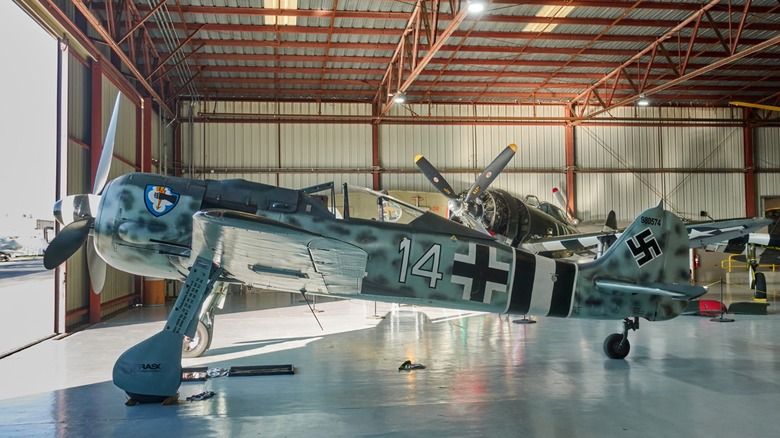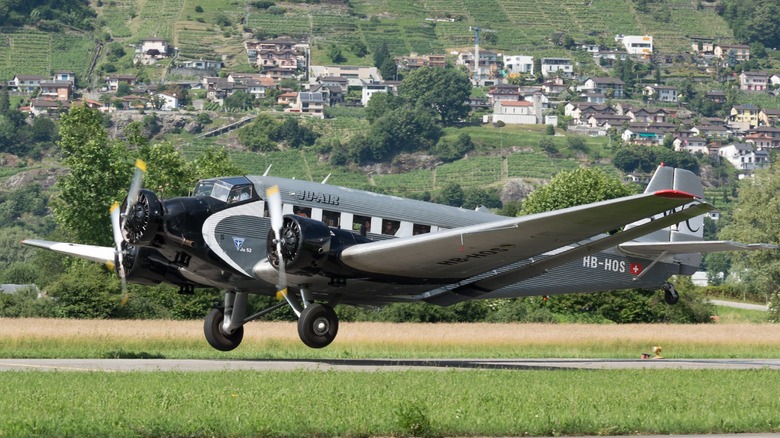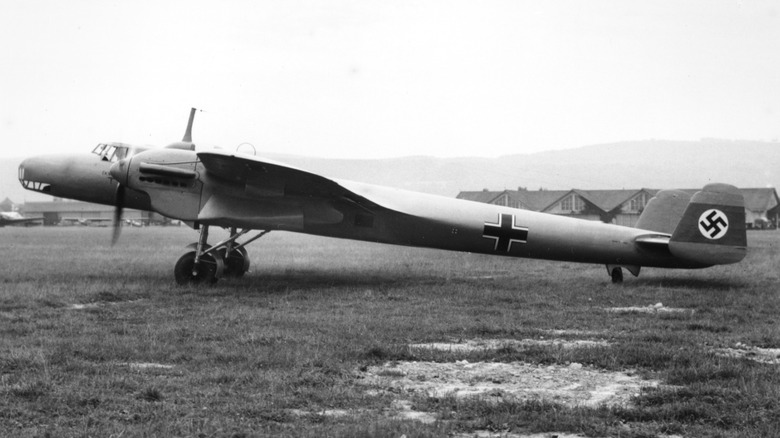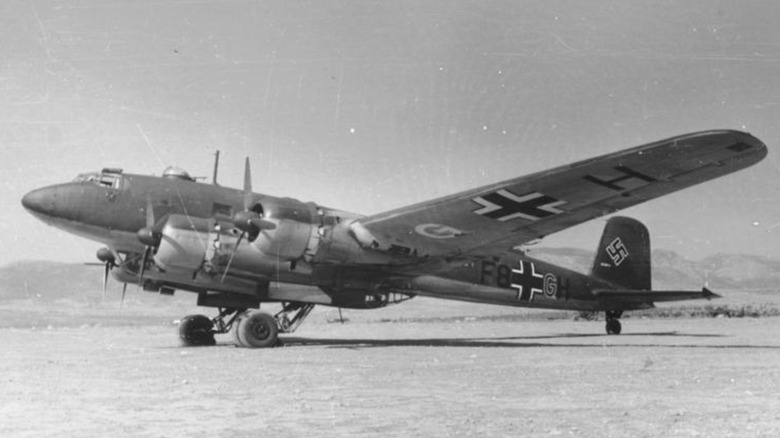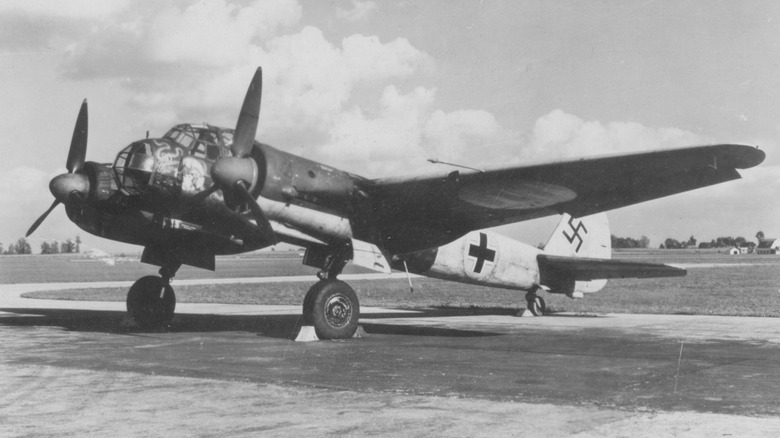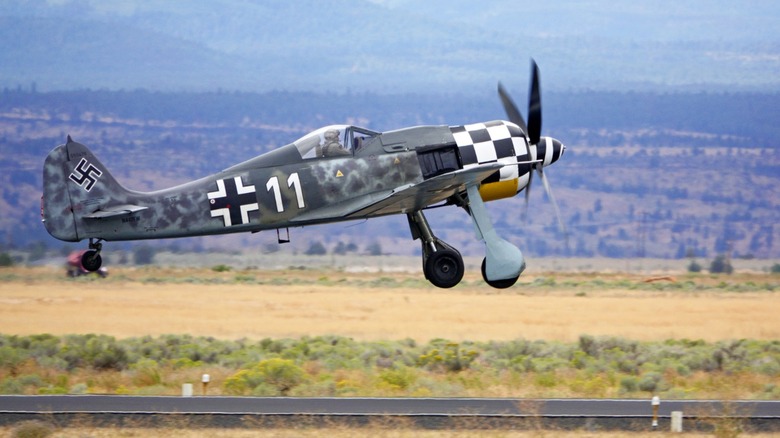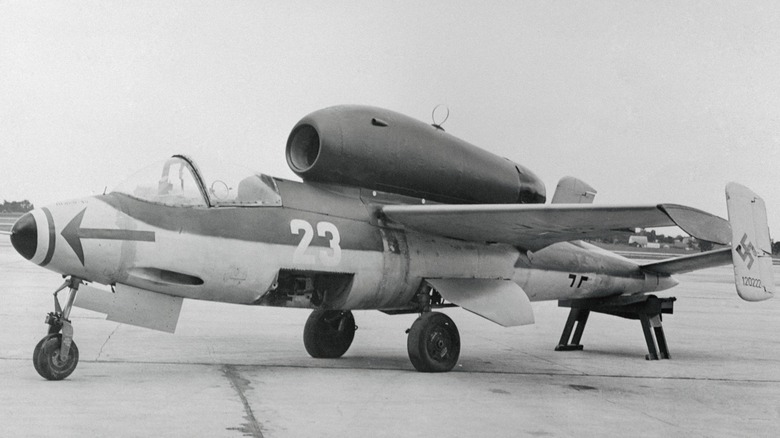6 Airplanes Powered By BMW Engines
We know BMW for building iconic cars and powerful engines that can put out 600 horses or more. However, did you know that this Bavarian company used to make airplane engines, too? It transitioned to this product during the Second World War, where it became an armaments firm. BMW built radial engines for transport planes, bombers, fighters, and several other types of aircraft.
It was also used to power one of the first jets that Germany built to help stave off defeat. Because of this, the company was shuttered by the Allied Forces after Germany's defeat in 1945. The company was reborn in 1948 as a motorcycle manufacturer, and built its first post-war road car, the BMW 501, in 1952. However, it never went back to making airplane engines. Despite that, the company did make a few engines that powered some iconic Luftwaffe airplanes. These are six German airplanes that took flight using BMW engines.
Junkers Ju 52/3m
The Junkers Ju 52 started as a single-engine transport plane in 1930, but its manufacturer wanted it to have more power, so it added more engines (one on each wing), turning it into a tri-motor aircraft similar to Ford Trimotor, one of the most unexpected things Ford built. The three-engine version is known as the Ju 52/3m, which was a hit among operators, with Germany's national airline, Deutsche Luft Hansa, ordering more than 200 airframes.
Aside from using the Ju 52 as a transport plane, the Luftwaffe also ordered a heavy bomber version of this aircraft during the mid-1930s, which it used during the Spanish Civil War in support of General Francisco Franco's Nationalists. Even though the Ju 52 was already considered obsolete by the outbreak of World War 2 in 1939, the Luftwaffe still used it extensively across the front lines, and even Adolf Hitler used one as his personal transport.
Each Junkers Ju 52/3m is powered by three BMW 132T-2 engines, with each one pushing out 830 hp. This allowed the plane to hit a maximum speed of 178 mph and a service ceiling of nearly 20,000 feet, while giving it a range of over 800 miles. While it's not as good as the C-47 Skytrain transport planes that the US Army Air Force used to drop the American paratroopers on D-Day, the Ju 52/3m's durability, simplicity, and excellent handling characteristics made it the preferred transport plane by the German armed forces.
Dornier Do 17
The Dornier Do 17 began its life as a prototype transport plane for Deutsche Luft Hansa, where its high speed was supposed to give an advantage over its competitors. However, the airline did not accept the aircraft because its slim fuselage limited its payload, making it commercially unviable to operate. However, one test pilot thought that the prototype's speed made it an ideal candidate for the Reichsluftfahrtministerium's (the German Ministry of Aviation) or RLM's Schnellbomber (fast bomber) program.
This aircraft's layout of a slim fuselage, two rudder fins, and two, large, shoulder-mounted engines gave it the Fliegender Bleistift or Flying Pencil nickname. The initial design featured Daimler-Benz DB 600A engines, but their limited supply meant that Dornier had to settle for BMW Bramo 323 "Fafnir" radial engines. The German Condor Legion, which was a Luftwaffe unit that helped General Franco in the Spanish Civil War, was equipped with this bomber, but it was soon discovered that it could be intercepted by Spanish Republican fighter planes. The airframe was modified to make it more streamlined, along with an improved BMW engine, with this version being called the Do 17Z-1. Dornier subsequently upgraded the BMW engines in the Do 17Z-1 by adding a two-speed supercharger on each one, resulting in the Do 17Z-2.
The Dornier Do 17Z-2 is the main production variant of this bomber, which allowed it to hit a maximum speed of 265 mph and a bomb load of 2,200 pounds. It also had between four and eight machines guns (depending on its equipment) for defense. Despite that, it was still vulnerable to British Hurricanes and Spitfire, and it was eventually replaced by the Junkers Ju 88 in frontline service.
Focke-Wulf Fw 200 Condor
The Focke-Wulf Fw 200 Condor began its life as a four-engine, long-distance airliner designed to service Deutsche Luft Hansa's routes to South America. It first flew in 1937 and, by 1938, was demonstrating flights between Berlin and New York (a 25-hour, non-stop flight) and Berlin and Tokyo (a 46-hour flight with three stops).
This aircraft was powered by four BMW 132L radial engines, which are similar to what the Junkers Ju 52/3m used. But what made it more impressive was its maximum fuel capacity of 4,360 liters or 1,151 US gallons, which gave it a maximum range of 3,556 kilometers or 2,085 miles. The operator could also overload it with fuel to reach 4,440 kilometers or 2,758 miles on a single tank. It has a massive size, allowing it to carry as many as 26 passengers. Because of this, Hitler used one example as part of his personal fleet.
When war broke out in 1939, the Luftwaffe took over a long-range reconnaissance version of the Fw 200 being developed for the Japanese Navy and instructed the company to continue development. This resulted in the Fw 200C-3, which is powered by four 1,200-hp BMW Bramo 323 engines also found on the Dornier Do 17. This gave it a maximum speed of 223 mph and a maximum bomb load of 4,629 pounds.
Junkers Ju 88
The Junkers Ju 88 was originally designed as a medium bomber for the Luftwaffe, but because of the many design requirements that were imposed on it, it eventually became a multipurpose aircraft. This meant that, aside from its role as a bomber, the Germans could use the Junkers Ju 88 for several other missions, including as a dive bomber and a night fighter. It could also serve as a reconnaissance aircraft, an anti-shipping attack aircraft, and as an airborne naval minelayer.
This aircraft was initially powered by two 12-cylinder Junkers Jumo 211 engines, but other variants were equipped with BMW 801 radial engines. This allowed the Ju 88 to have a 292 mph top speed, although this would drop to 230 mph if equipped with its maximum 4,400-pound bomb load. Aside from the bombs in its bomb bay, the Ju 88 could also carry other armaments like torpedoes and rockets under its wings, making it one versatile attack aircraft.
Focke-Wulf Fw 190
Most people would know about the Messerschmitt Bf 109 as one of the top World War II fighter aircraft, often facing off with the RAF's Hawker Hurricane and Supermarine Spitfire, and the USAAF's North American P-51 Mustang. However, Germany fielded another fighter plane that was less popular than the Bf 109 but still as effective — the Focke-Wulf Fw 190. This aircraft was powered by a BMW 801 D-2 radial engine that can push out an astounding maximum of 2,100 hp when used with the MW-50 methanol-water injection system.
Even at normal power, the engine on the Fw 190 could hit 1,776 hp, pushing the plane to 426 mph. Aside from its amazing speed, it also had excellent maneuverability, allowing it to outclass the earlier Spitfire and Hurricane versions during the early part of the war. The Fw 190 was one of Germany's defensive fighters that caused heavy losses to American bombers during its bombing campaign in 1943.
This fighter also deployed on the Eastern Front, serving both as a fighter and ground attack aircraft. The Focke-Wulf factory delivered conversion kits to the front line, allowing mechanics to attach cannons, bombs, rockets, and torpedoes to the Fw 190, allowing it to serve as a close-support aircraft and help blunt the Soviet advance.
Heinkel He 162 Volksjäger
During the closing months of the war, the German government was getting desperate to build a weapon that will help turn the tide of the war. The Maus tank was one of these "wonder weapon" designs, but the Luftwaffe also wanted something that was easy to design, build, and fly. This "emergency, lightweight fighter" is called the Heinkel He 162 Volksjäger or "People's Fighter" and is supposed to be so easy to operate that even young, teenaged pilots could fly it into combat. This jet, which first flew in December 1944, was powered by a single BMW 003 turbojet engine and was armed with two 20 mm cannons.
However, aside from the fact that turbojets were new technology back then, Heinkel only had 74 days to go from the drawing board to the first prototype. This meant that the test pilots discovered that the Volksjäger was notoriously difficult to fly, with the first prototype crashing four days after it first flew. These experienced pilots were eventually able to learn how to control the jet, probably owing to their experience.
But if the Luftwaffe fielded this jet for its intended purpose — to be used by Hitler Youth squadrons that had limited training — it's likely that the jet would have killed more of its pilots through operational mishaps than the number of enemy Allied aircraft it would have shot down. This was also one of the last airplanes that would use a BMW engine, since the company has never returned to making aircraft powerplants after 1945.
